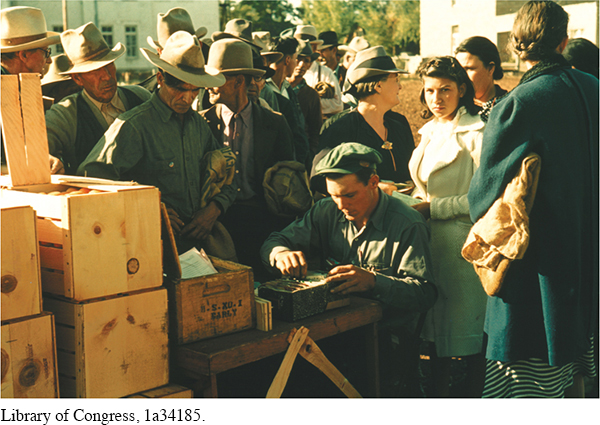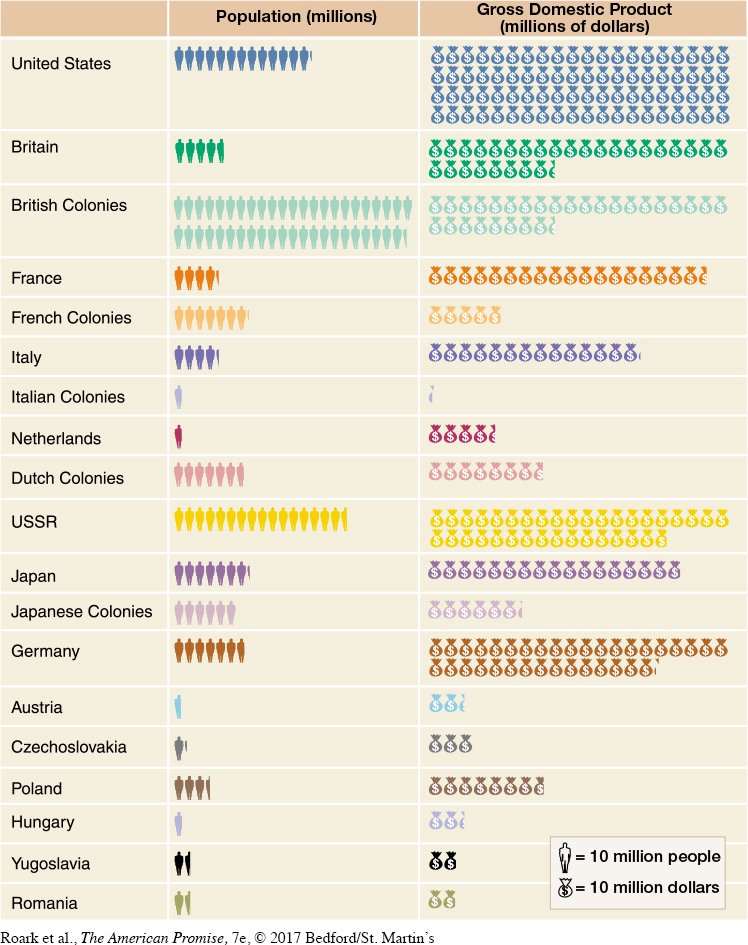The American Promise: Printed Page 705
The American Promise, Value Edition: Printed Page 642
The American Promise: A Concise History: Printed Page 732
Reaction and Recession
Emboldened by their defeat of the court-
Roosevelt himself favored slowing the pace of the New Deal. He believed that existing New Deal measures had steadily boosted the economy and largely eliminated the depression crisis. In fact, the gross national product in 1937 briefly equaled the 1929 level before dropping lower for the rest of the decade. Unemployment declined to 14 percent in 1937 but quickly spiked upward and stayed higher until 1940. Roosevelt’s unwarranted optimism about the economic recovery persuaded him that additional deficit spending by the federal government was no longer necessary.
The American Promise: Printed Page 705
The American Promise, Value Edition: Printed Page 642
The American Promise: A Concise History: Printed Page 732
Page 706Roosevelt’s optimism failed to consider the stubborn realities of unemployment and poverty, and the reduction in deficit spending reversed the improving economy. Even at the high-

This economic reversal hurt the New Deal politically. Conservatives argued that this recession proved that New Deal measures produced only an illusion of progress. The way to weather the recession was to tax and spend less as well as to wait for the natural laws of supply and demand to restore prosperity. Many New Dealers insisted instead that the continuing depression demanded that Roosevelt revive federal spending and redouble efforts to stimulate the economy. In 1938, Congress heeded such pleas and enacted a massive new program of federal spending.
The recession scare of 1937–
